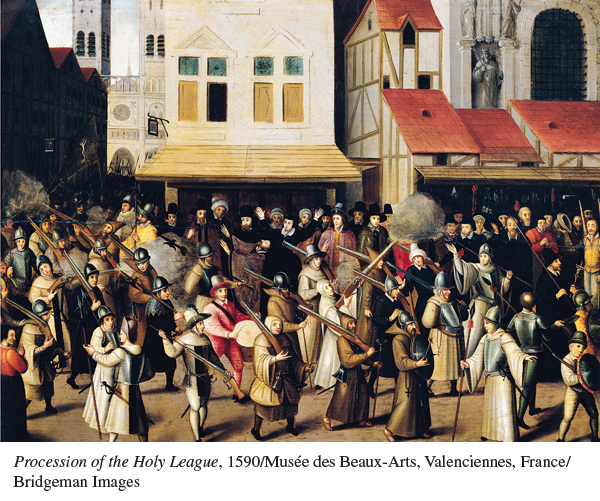A History of Western Society: Printed Page 390
A History of Western Society, Value Edition: Printed Page 375
A History of Western Society, Concise Edition: Printed Page 391
Introduction for Chapter 13
13
Reformations and Religious Wars
1500–1600
Calls for reform of the Christian Church began very early in its history. Throughout the centuries, many Christians believed that the early Christian Church represented a golden age, akin to the golden age of the classical past celebrated by Renaissance humanists. When Christianity became the official religion of the Roman Empire in the fourth century, many believers thought that the church had abandoned its original mission, and they called for a return to a church that was not linked to the state. Throughout the Middle Ages, individuals and groups argued that the church had become too wealthy and powerful and urged monasteries, convents, bishoprics, and the papacy to give up their property and focus on service to the poor. Some asserted that basic teachings of the church were not truly Christian and that changes were needed in theology as well as in institutional structures and practices. The Christian humanists of the late fifteenth and early sixteenth centuries such as Erasmus urged reform, primarily through educational and social change. What was new in the sixteenth century was the breadth of acceptance and the ultimate impact of the calls for reform. This acceptance was due not only to religious issues and problems within the church, but also to political and social factors. In 1500 there was one Christian Church in western Europe to which all Christians at least nominally belonged. One hundred years later there were many, a situation that continues today.▪

CHAPTER PREVIEW
What were the central ideas of the reformers, and why were they appealing to different social groups?
How did the political situation in Germany shape the course of the Reformation?
How did Protestant ideas and institutions spread beyond German-
What reforms did the Catholic Church make, and how did it respond to Protestant reform movements?
What were the causes and consequences of religious violence, including riots, wars, and witch-
Chronology
| 1517 | Martin Luther writes “Ninety- |
| 1521 | Diet of Worms |
| 1521–1559 | Habsburg- |
| 1525 | German Peasants’ War |
| 1526 | Turkish victory at Mohács, which allows spread of Protestantism in Hungary |
| 1530s | Henry VIII ends the authority of the pope in England |
| 1535 | Angela Merici establishes the Ursulines as first women’s teaching order |
| 1536 | John Calvin publishes The Institutes of the Christian Religion |
| 1540 | Papal approval of Society of Jesus (Jesuits) |
| 1542 | Pope Paul III establishes the Supreme Sacred Congregation of the Roman and Universal Inquisition |
| 1545–1563 | Council of Trent |
| 1553–1558 | Reign of Mary Tudor and temporary restoration of Catholicism in England |
| 1555 | Peace of Augsburg; official recognition of Lutheranism |
| 1558–1603 | Reign of Elizabeth in England |
| 1560–1660 | Height of the European witch- |
| 1568–1578 | Civil war in the Netherlands |
| 1572 | Saint Bartholomew’s Day massacre |
| 1588 | England defeats Spanish Armada |
| 1598 | Edict of Nantes |